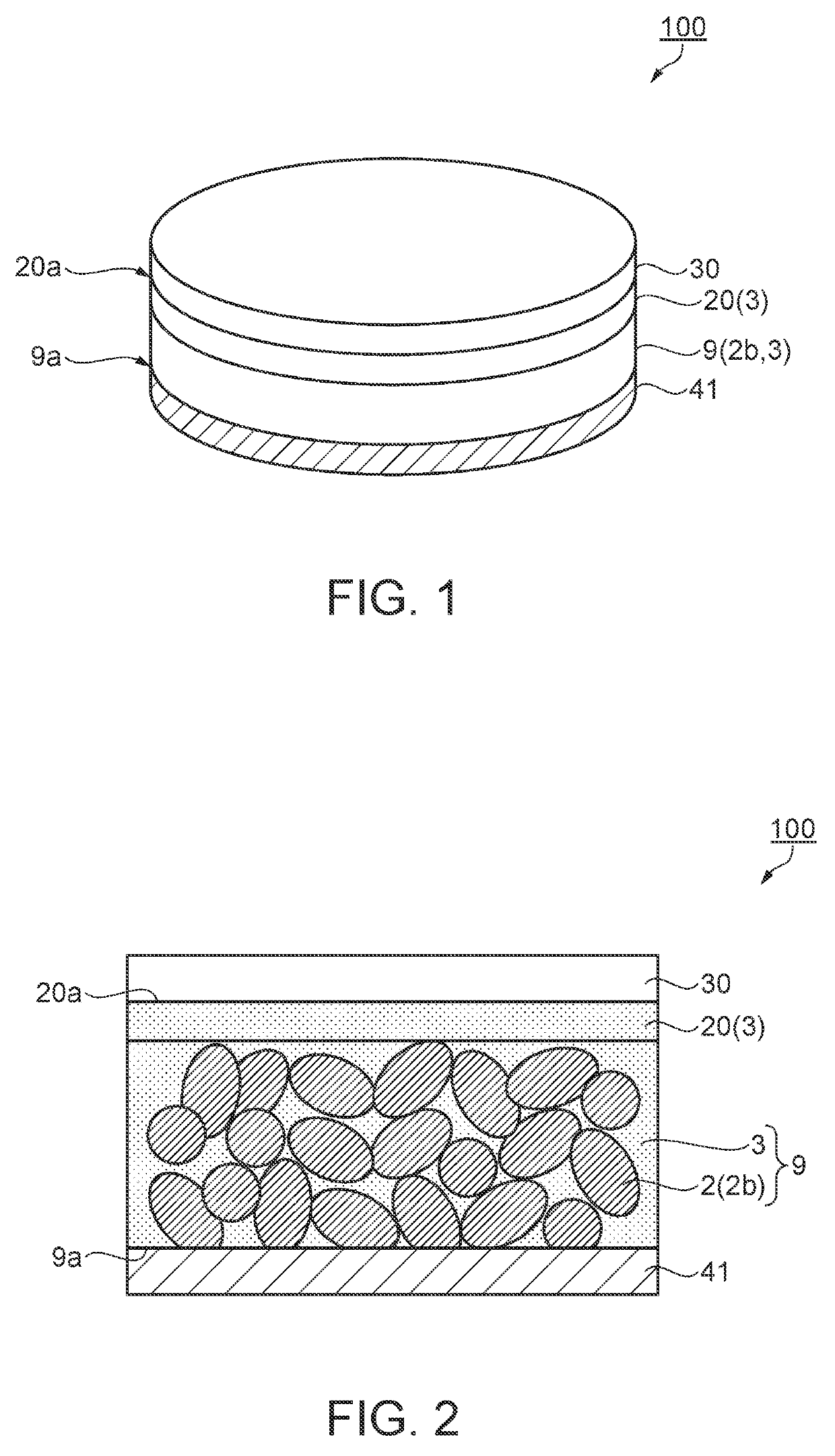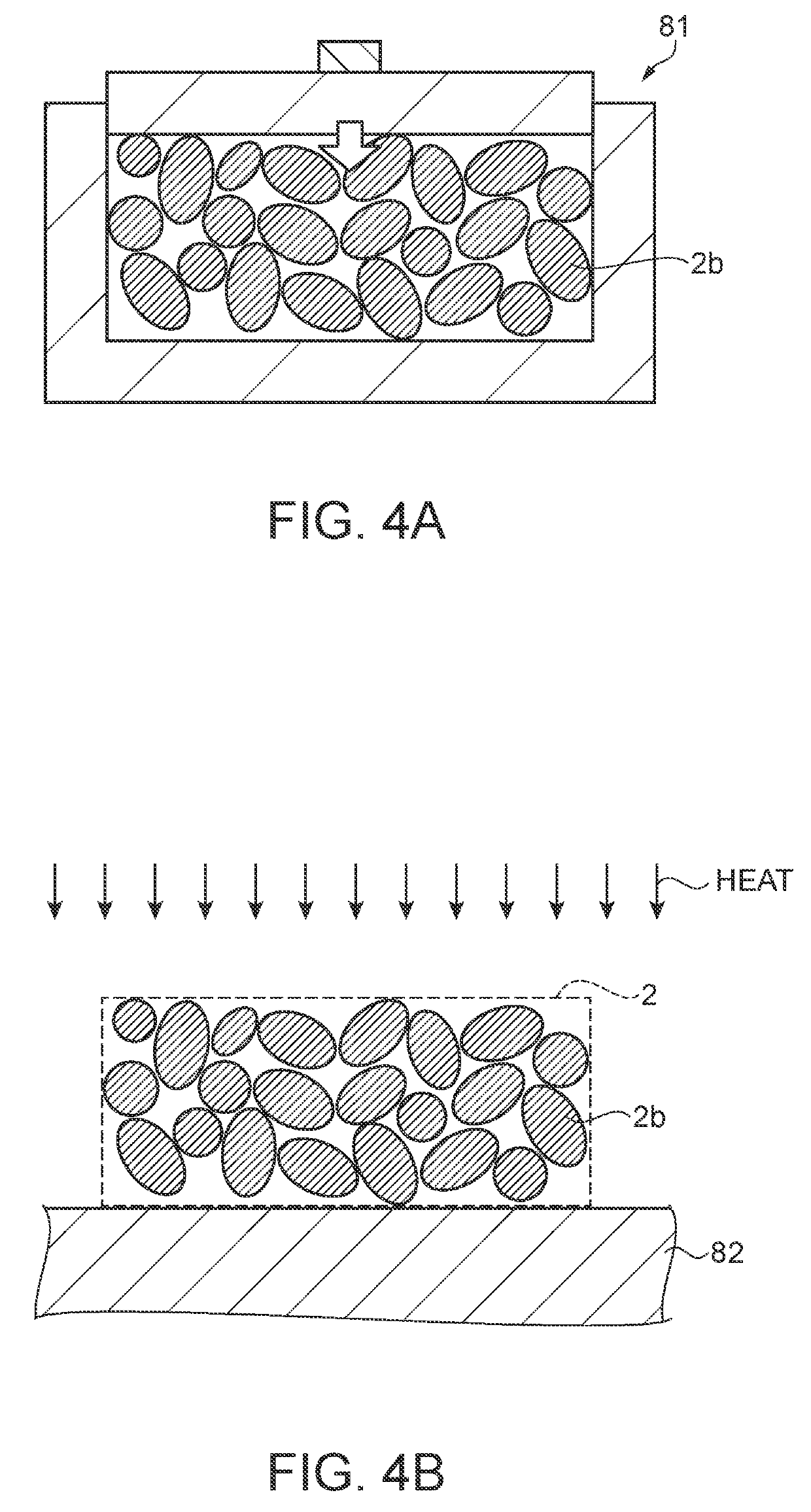Polymer electrolyte, polymer electrolyte composition, battery, and electronic apparatus
a technology of polymer electrolyte and electrolyte, which is applied in the direction of batteries, sustainable manufacturing/processing, cell components, etc., can solve the problems of difficult to ensure the lithium ion conduction property, difficult to improve the ion conduction property, and the inability to ensure the capacity of a lithium battery
- Summary
- Abstract
- Description
- Claims
- Application Information
AI Technical Summary
Benefits of technology
Problems solved by technology
Method used
Image
Examples
first embodiment
Battery
[0064]First, a battery according to this embodiment will be described with reference to FIG. 1. In this embodiment, a lithium battery will be described as an example of the battery. FIG. 1 is a schematic perspective view showing a configuration of a lithium battery as the battery according to the first embodiment.
[0065]As shown in FIG. 1, a lithium battery 100 of this embodiment includes an electrolyte section 20 which contains a polymer electrolyte composition 3, a positive electrode 9 as an assembly which is provided in contact with the electrolyte section 20 and contains an active material 2b and the polymer electrolyte composition 3 as an electrolyte, and a first current collector 41 as a current collector which is provided for the electrolyte section 20 through the positive electrode 9. The first current collector 41 is provided in contact with one surface 9a of the positive electrode 9. Further, the lithium battery 100 includes a negative electrode 30 which is provided ...
example 1
[0143]The lithium battery 100 of Example 1 was produced using the production method and the forming materials of the first embodiment described above. Here, the procedure from the preparation of a precursor solution 3X of a polymer electrolyte composition 3 to the formation of a positive electrode 9 and an electrolyte section 20 will be specifically described. As shown in FIG. 5, in the polymer electrolyte composition 3 (precursor solution 3X) of Example 1, PPGAc and methacrylonitrile were mixed in equimolar amounts. That is, in the above formula (1), when m and n are set as follows: m+n=10, m and n satisfy the following formula: m=n=5.
[0144]In a reagent bottle made of PYREX (volume: 5 mL), PPGAc (1.3870 g, 2.92×10−3 mol) and Li-TFSI (0.4134 g, 1.44×10−3 mol) were weighed and placed. Here, the amount: 1.44×10−3 mol of Li-TFSI corresponds to a molar ratio of about 2.47 when m and n are set as follows: m+n=10 in the above formula (1). The reagent bottle was immersed in an ultrasonic g...
example 2
[0148]With respect to the lithium battery 100 of Example 2, the same procedure as in Example 1 was performed except that the precursor solution 3X was prepared using methacrylonitrile (0.0839 g, 1.25×10−3 mol), Li-TFSI (0.2957 g, 1.03×10−3 mol), and AIBN (0.0028 g, 1.73×10−5 mol) as shown in FIG. 5 in contrast to Example 1, whereby an ion conductivity sample and the lithium battery 100 of Example 2 were produced. Therefore, in the polymer electrolyte (precursor solution 3X) of Example 2, in the above formula (1), when m and n are set as follows: m+n=10, m and n satisfy the following formulae: m=3 and n=7, and the molar ratio of Li-TFSI corresponds to about 1.76, and the molar ratio of AIBN corresponds to about 0.030.
PUM
| Property | Measurement | Unit |
|---|---|---|
| thickness | aaaaa | aaaaa |
| thickness | aaaaa | aaaaa |
| diameter | aaaaa | aaaaa |
Abstract
Description
Claims
Application Information
 Login to View More
Login to View More - R&D
- Intellectual Property
- Life Sciences
- Materials
- Tech Scout
- Unparalleled Data Quality
- Higher Quality Content
- 60% Fewer Hallucinations
Browse by: Latest US Patents, China's latest patents, Technical Efficacy Thesaurus, Application Domain, Technology Topic, Popular Technical Reports.
© 2025 PatSnap. All rights reserved.Legal|Privacy policy|Modern Slavery Act Transparency Statement|Sitemap|About US| Contact US: help@patsnap.com



